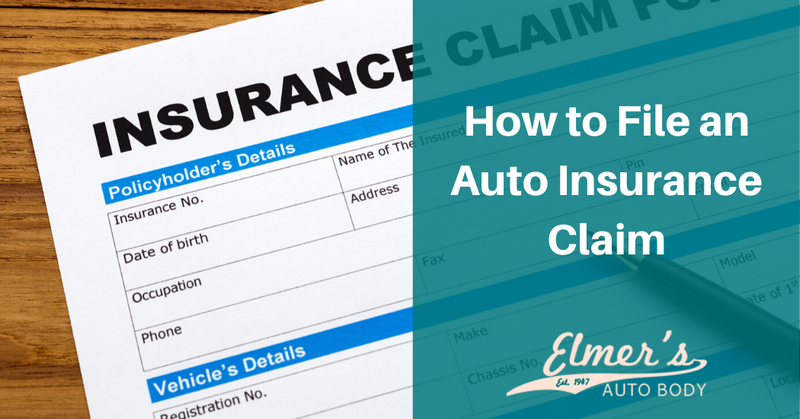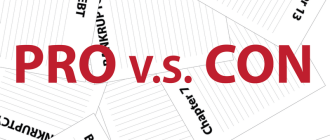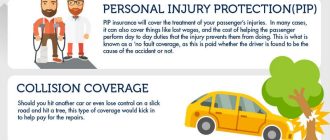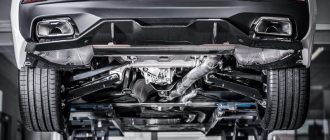
How to File an Insurance Claim for Auto Body Repair
When your car gets damaged in an accident or any other incident, it’s important to file an insurance claim to cover the cost of repairs. Filing an auto insurance claim for body repair can be a daunting task, but with the right information and steps, you can navigate through the process smoothly.
Step 1: Collect all necessary information. Before filing a claim, gather all the pertinent information related to the incident. This includes the details of the accident, such as date, time, and location, as well as the contact information of all parties involved. Take photos of the damage to provide visual evidence of the extent of the repairs needed.
Step 2: Contact your insurance company. After gathering all the necessary information, get in touch with your insurance company as soon as possible. Inform them about the incident and provide them with all the details you have collected. They will guide you through the next steps and answer any questions you may have.
Step 3: Obtain an estimate. The insurance company will likely require you to obtain an estimate for the auto body repairs. They may have a preferred list of repair shops that you can choose from, or you can find reputable ones on your own. Get multiple estimates to compare prices and ensure you’re getting a fair deal.
Step 4: File the claim. Once you have the estimate, submit it to your insurance company along with any other required documents. This step can usually be done online, over the phone, or through email. Provide them with all the information they need to process your claim promptly.
Step 5: Review and settle the claim. After submitting the claim, the insurance company will review the estimate and make a determination on whether it will be covered. If approved, they will provide you with the settlement amount, which may include deductible or depreciation. Review the settlement offer and negotiate if necessary. Once you reach an agreement, the insurance company will issue a check or make a direct payment to the repair shop.
By following these steps, you can efficiently navigate the process of filing an insurance claim for auto body repair. Remember to keep all the necessary documentation and communicate effectively with your insurance company to ensure a smooth and successful claim process.
Understanding the Insurance Policy
When you file an insurance claim for auto body repair, it is crucial to understand your insurance policy thoroughly. This will help you know what to expect and how to navigate the claims process effectively.
First and foremost, you need to review your insurance policy to ensure that your auto body repair is covered. Look for any exclusions or limitations that may apply, such as specific conditions or deductibles. Understanding these details will give you a clear idea of what expenses may be reimbursed and what you may need to pay out of pocket.
In addition to coverage details, it’s important to familiarize yourself with the claims filing procedure outlined in your insurance policy. This will typically involve contacting your insurance company as soon as possible after the incident occurs. They will provide you with the necessary forms and information to begin the process. Make sure to follow the instructions precisely to avoid any delays or complications.
When filing the insurance claim, be prepared to provide detailed information about the auto body repair that is needed. This may include providing relevant documentation such as estimates from repair shops, photographs of the damage, and any other supporting evidence required by your insurance company.
Furthermore, understanding the role of your insurance company’s claims adjuster is essential. The adjuster will assess the damages and determine their extent, as well as approve the repair estimates provided. Be prepared to coordinate with the adjuster and provide access to the damaged vehicle for inspection.
Finally, knowing how long the insurance claim process may take is crucial. While it can vary depending on the complexity of the claim, understanding the general timeline will help you manage your expectations. Keep in mind that delays can occur, so it’s essential to stay in regular communication with your insurance company throughout the process.
In summary, understanding your insurance policy is fundamental when filing an insurance claim for auto body repair. Take the time to review your policy, be aware of any limitations or exclusions, and follow the claims filing procedure precisely. By doing so, you can ensure a smoother and more efficient claims process.
Documenting the Damage
When filing an insurance claim for auto body repair, it is crucial to thoroughly document the extent of the damage. This documentation serves as crucial evidence to support your claim and ensure proper compensation from your insurance provider.
Start by taking clear and detailed photographs of the damaged areas. In order to provide an accurate assessment of the damage, make sure to take pictures from various angles and distances. Focus on capturing both close-up shots and wider shots that show the overall context of the damage. It’s also a good idea to take pictures from multiple perspectives, such as from the front, back, and sides of the vehicle.
In addition to photographs, it’s important to write down a detailed description of the damage. Be specific in your description, noting the location, size, and type of damage. If there are any visible scratches, dents, or broken parts, mention them in your documentation. Including as much detail as possible will help provide a comprehensive view of the damage.
When documenting the damage, it’s important to be accurate and truthful. Avoid exaggerating or downplaying the extent of the damage, as this can negatively impact your claim. Take the time to thoroughly inspect your vehicle and make note of all visible damage, so nothing goes unnoticed.
Once you have gathered all the necessary documentation, keep them safe and organized. It’s a good idea to make digital copies of your photographs and store them on a secure device or cloud storage. Keep a written copy of your detailed description, along with any other relevant documents, such as repair estimates or police reports.
By documenting the damage in a thorough and accurate manner, you will be better equipped to file an insurance claim for auto body repair and increase the likelihood of a successful outcome.
Collecting Evidence
When filing an insurance claim for auto body repair, it is important to gather all the necessary evidence to support your case. Insurance companies require proof of the damage in order to process your claim efficiently.
To collect the necessary evidence, follow these steps:
1. Take Photos: Start by taking clear and detailed photos of the damage to your vehicle. Capture multiple angles and close-ups to provide a comprehensive visual record.
2. Document the Scene: If possible, document the scene of the accident where the damage occurred. Take photos of any relevant details such as skid marks, debris, or any other factors that could help support your claim.
3. Obtain a Police Report: If the accident involved another vehicle or property damage, it is crucial to obtain a police report. This report will serve as an official record of the incident and can help validate the details of the accident.
4. Gather Witness Statements: If there were any witnesses to the accident or individuals who can provide additional information, collect their statements. These statements can add credibility to your claim.
5. Keep Repair Documentation: After the accident, it is important to keep all documentation related to the repair of the auto body damage. This includes estimates, invoices, and receipts for parts and labor.
6. Maintain Communication: Throughout the claims process, keep a record of all communication with the insurance company. This includes emails, phone calls, and any relevant documents exchanged.
By following these steps and collecting the necessary evidence, you can strengthen your insurance claim and improve the chances of a successful resolution.
Contacting Your Insurance Company
When it comes to filing an insurance claim for auto body repair, the first step is to contact your insurance company. It is important to notify them as soon as possible after the incident occurs.
Before you reach out to your insurance company, gather all the necessary information about the accident or damage to your vehicle. This includes details such as the date, time, and location of the incident, a description of what happened, and any photos or documentation you may have.
When contacting your insurance company, be prepared to provide them with your policy information, such as your policy number and any applicable deductibles. You should also be ready to explain the nature of the claim, whether it’s for repairs to your vehicle’s body or any other related damages.
It is important to follow the specific procedures outlined by your insurance company for filing a claim. They may have specific forms or online portals where you can submit all the necessary information. Make sure to provide accurate and detailed information to ensure a smooth claims process.
Once you have filed your claim, the insurance company will provide you with further instructions on how to proceed. This may include obtaining an estimate for the repairs, scheduling an inspection of your vehicle, or working with an approved auto body repair shop. Follow these instructions carefully to ensure your claim is processed efficiently.
Remember, contacting your insurance company promptly and providing them with all the necessary information is crucial when filing an insurance claim for auto body repair. This will help expedite the process and ensure that you receive the coverage you are entitled to under your policy.
Providing Necessary Information
When filing an insurance claim for auto body repair, it is important to provide the necessary information to ensure a smooth process. Here are the key details you will need to provide:
1. File the claim: Start by contacting your insurance company and informing them that you need to file a claim for auto body repair. They will guide you through the entire process and provide you with the necessary forms to fill out.
2. Provide details: When filling out the claim form, you will need to provide specific details about the incident. This includes the date, time, and location of the accident, as well as any other relevant information such as weather conditions or witnesses.
3. Insurance information: You will need to provide your insurance policy number, the name of your insurance company, and contact information for your insurance agent. This information is essential for the insurance company to locate your policy and determine your coverage.
4. Vehicle information: Provide detailed information about your vehicle, including the make, model, year, and VIN (Vehicle Identification Number). The insurance company will need this information to assess the damages and determine the appropriate coverage for your auto body repair.
5. Description of damages: When describing the damages, be as detailed as possible. Include information about both the visible damages to the exterior of the vehicle and any internal damages that may have occurred. Providing clear and accurate descriptions will help ensure that your claim is processed accurately.
6. Photos and documentation: It is important to provide visual evidence of the damages. Take clear photos of the affected areas of your vehicle from multiple angles. Additionally, gather any supporting documents such as police reports or repair estimates that can help substantiate your claim.
7. Contact information: Lastly, provide your contact information, including your name, phone number, and email address. This will allow the insurance company to reach out to you if they need any additional information during the claims process.
By providing all the necessary information accurately and promptly, you can help expedite the claims process and ensure that your auto body repair is covered by your insurance.
Getting an Estimate
Once you have filed a claim with your insurance company for auto body repair, the next step is to get an estimate for the cost of the repairs.
There are several ways to obtain an estimate:
1. Contact your insurance company:
Reach out to your insurance provider to see if they can provide you with a list of recommended repair shops or if they have a preferred shop that they work with. They may require you to get an estimate from one of their preferred shops.
2. Shop around:
If your insurance company doesn’t have any specific requirements, you can start looking for repair shops on your own. Get estimates from several different shops to compare prices and services. Make sure that the shop you choose is reputable and has experience with auto body repairs.
3. Provide necessary information:
When contacting repair shops for estimates, be prepared to provide them with the details of your insurance claim. This may include your policy number, information about the accident, and any photos or documentation you have.
4. Get a detailed estimate:
When you receive an estimate, make sure it includes a breakdown of all the costs involved in the repair. This should include parts, labor, and any additional fees or taxes. Make sure the estimate is thorough and clear so that you understand what exactly is being covered.
Remember to keep all the documents related to your insurance claim and the estimates you receive. These will be important when it comes time to move forward with the repair process.
Choosing a Repair Shop
When filing an insurance claim for auto body repair, one of the most important decisions you will need to make is choosing the right repair shop. Here’s how to find the best option for your needs:
- Research: Start by doing some research to find reputable repair shops in your area. Look for shops that specialize in auto body repair and have positive reviews from previous customers.
- Ask for recommendations: Reach out to friends, family, and colleagues who have filed an insurance claim for auto body repair in the past. Ask them about their experience with different repair shops and if they would recommend any particular one.
- Check certifications: Make sure the repair shop you are considering has the necessary certifications and licenses. Look for certifications from organizations such as the National Institute for Automotive Service Excellence (ASE) to ensure that the technicians working on your vehicle are qualified.
- Get multiple estimates: It’s always a good idea to get estimates from multiple repair shops before making a decision. This will give you an idea of the average cost of repairs and help you identify any potential red flags.
- Ask about warranties: Inquire about the warranties offered by the repair shop for their work. A reputable shop should be willing to stand behind their repairs and offer a reasonable warranty period.
- Visit the repair shop: Consider visiting the repair shop in person to get a firsthand look at their facilities and equipment. This will give you an idea of their level of professionalism and the quality of their work.
- Communication: Pay attention to how the repair shop communicates with you. Are they responsive to your questions and concerns? Do they provide timely updates on the progress of your repairs? Good communication is key to a smooth and successful repair process.
By following these steps, you can ensure that you choose a reputable and reliable repair shop when filing an insurance claim for auto body repair.
Informing the Insurance Company
When your auto body repair is needed due to an accident or damage, it’s important to inform your insurance company as soon as possible.
To file a claim for auto body repair, you should contact your insurance company and provide them with all the necessary information. This includes details about the accident, photos of the damage, and any other relevant documentation they may request.
When speaking to your insurance company, be prepared to answer questions about the accident, such as when and where it occurred, who was involved, and any other relevant details. It’s important to be thorough and provide accurate information to ensure a smooth claims process.
Additionally, it’s important to understand your insurance policy and what it covers. Some policies may require you to use specific repair shops or may have certain limitations on coverage. By knowing the details of your policy, you can better navigate the claims process and ensure you’re taking full advantage of your insurance coverage.
Remember to keep all communication with your insurance company documented. Be sure to take note of the names of any representatives you speak with, as well as the date and time of your conversations. This can be helpful if any issues or disputes arise during the claims process.
| Provide details about the accident |
| Submit photos of the damage |
| Provide any other relevant documentation |
| Understand your insurance policy and its coverage |
| Keep a record of all communication with your insurance company |
Approval Process
Once you have filed a claim with your insurance company for auto body repair, the approval process will begin. Here is how it works:
- First, the insurance company will review the details of your claim, including any photographs or documentation you provided.
- Next, they may send out an adjuster to assess the damage and determine the cost of repairs.
- The adjuster will provide their assessment to the insurance company, who will then determine if the claim is covered under your policy.
- If the claim is approved, the insurance company may provide you with an estimate of the repair costs and a list of approved auto body repair shops.
- You can then choose a repair shop from the approved list and schedule an appointment for the repairs.
- Once the repairs are complete, the repair shop will send the bill directly to the insurance company for payment.
- The insurance company will review the final bill and may negotiate any necessary adjustments with the repair shop.
- Once the bill is approved, the insurance company will issue payment to the repair shop.
It is important to note that the approval process can take time, especially if there is a need for further assessment or negotiation. It is advisable to stay in contact with your insurance company throughout the process to ensure a smooth and timely resolution to your claim.
Getting the Repair Process Started
When your auto body sustains damage and you need to file a claim for insurance coverage, it’s important to know how to get the repair process started. Here’s a step-by-step guide on how to file an insurance claim for auto body repair:
Step 1: File a claim
Contact your insurance provider as soon as possible to let them know about the damage to your vehicle. Provide all the necessary details such as the date, time, and location of the accident, and any other relevant information.
Step 2: Get an assessment
Your insurance provider may require an assessment of your vehicle’s damage. They will either send an adjuster to inspect your vehicle or direct you to an authorized repair shop to get an estimate. Be sure to follow their instructions and provide any necessary documentation.
Step 3: Choose a repair shop
Once you have the assessment, you can choose the body shop where you want the repairs to be done. Depending on your insurance policy, you may be required to use a shop from their network of preferred providers. However, you can also choose your own shop if it meets their requirements.
Step 4: Authorize repairs
Before any work can be done, you’ll need to authorize the repairs with your insurance provider. They may require you to sign a form or provide verbal confirmation. Make sure you understand the extent of the repairs and what will be covered by your policy.
Step 5: Pay your deductible
Depending on your policy, you may be responsible for paying a deductible before the insurance coverage kicks in. Check your policy details to see how much you’ll need to pay and make arrangements to pay the deductible to the repair shop before they start the repairs.
Step 6: Get the repairs done
Once everything is in order, the repair shop can begin the necessary repairs on your vehicle. They will follow the assessment and make sure to address all the damages covered in your claim.
Step 7: Inspect the repairs
Once the repairs are completed, take the time to thoroughly inspect your vehicle. Ensure that all the damages have been properly repaired and that you are satisfied with the results. If you notice any issues, contact your insurance provider and the repair shop immediately to resolve them.
By following these steps, you can get the repair process started and ensure that your insurance claim for auto body repair is handled smoothly and efficiently.
Question-answer:
What happens if the cost of repairs exceeds the coverage limit?
If the cost of repairs exceeds the coverage limit of your insurance policy, you may have to pay the remaining amount out of pocket. This is known as the deductible. The deductible is the pre-determined amount that you agree to pay towards the cost of repairs before your insurance coverage kicks in. For any costs above the coverage limit and deductible, you will be responsible for paying the additional expenses.
Can I choose any auto body shop for repairs or do I have to use a shop recommended by my insurance company?
In most cases, you have the right to choose any auto body shop for repairs. However, insurance companies may have preferred or recommended shops that they work with and may offer certain benefits, such as direct billing or guaranteed repairs, if you use one of these shops. It is advisable to check with your insurance company about their policy regarding choosing repair shops and any potential benefits or limitations associated with using a shop outside of their network.
What is an insurance claim?
An insurance claim is a formal request made by a policyholder to their insurance company, seeking compensation for a covered loss or damage.
What types of damages are typically covered by auto insurance?
Auto insurance typically covers damages caused by accidents, vandalism, theft, weather events, and other specific situations outlined in the policy. However, it is important to review your specific insurance policy to understand the coverage details.





